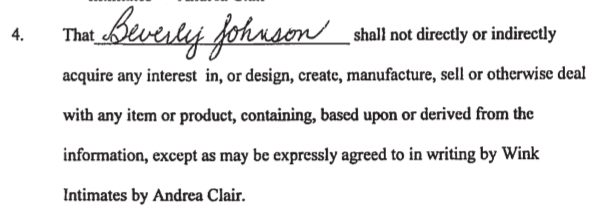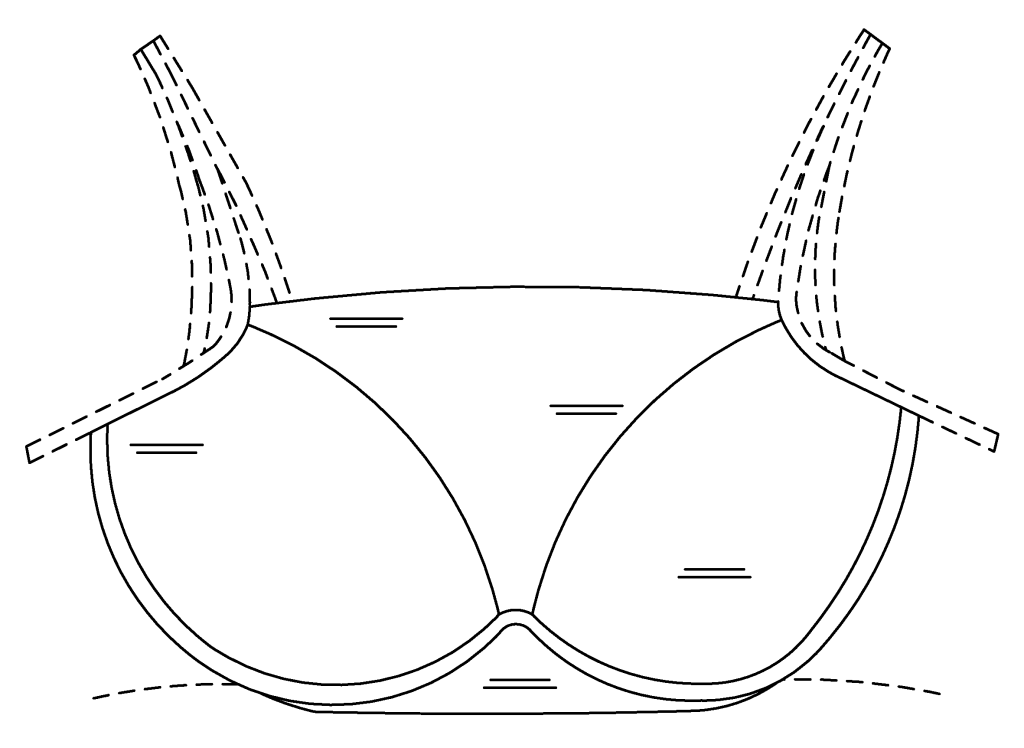It’s a simple case, but simple doesn’t mean you get to take shortcuts on the legal rationale.
At the end of 1998 Ford and ThermoAnalytics entered into a License Agreement for RadTherm software for heat mapping. In the agreement, FGTI (Ford Global Technologies, Inc.) granted ThermoAnalytics an exclusive license to develop and commercialize “FGTI Licensed Software” in exchange for royalties, with the RadTherm software scheduled as FGTI Licensed Software. The agreement provided that “FGTI … shall have ownership of all copyright, trade secret, patent, trademark and other intellectual or industrial property rights therein or associated therewith.” There was also this “Trademark Notice” clause:
 If you can’t see the image, it says
If you can’t see the image, it says
All trademarks and trade names identifying FGTI Licensed Software or FGTI or Ford businesses are, and will remain the exclusive property of FGTI and Ford respectively. [ThermoAnalytics] shall not take any action that jeopardizes the Marks, and acquires no rights in the Marks except in the limited use rights specified below. [ThermoAnalytics] shall be limited to using the Marks exclusively to advertise and promote FGTI Licensed Software.
In 2000, ThermoAnalytics released version 5.0 of RadTherm but claimed it was an entirely different work than the previous versions, created under a program with the US Army. Nevertheless ThermoAnalytics continued to pay royalties to Ford for 13 more years, finally terminating the agreement in March, 2014. ThermoAnalytics informed Ford that Ford did not have a copyright ownership interest in the existing version of the software but it nevertheless called the new software “RadTherm,” even after the lawsuit was filed. ThermoAnalytics had also registered the RADTHERM trademark in 2000.
Ford brought suit against ThermoAnalytics. The first claim for relief alleged that, under § 43(a) of the Lanham Act:
ThermoAnalytics’ use of the RADTHERM trademark was “likely to confuse, mislead or deceive customers, purchasers and members of the general public as to the origin, source, sponsorship or affiliation of Defendant’s RADTHERM IR Software, and is likely to cause such people to believe in error that Defendant’s RADTHERM IR Software products and services have been authorized, sponsored, approved, endorsed or licensed by Ford.
It also brought claims for cancellation of ThermoAnalytics’ trademark registration, breach of contract, and a declaration that Ford was joint owner of the copyright in the software.
It’s a fairly easy contract interpretation to find that Ford owns the RADTHERM trademark:
The language of the Agreement is plain. Section 12, the “Trademark Notices” of the Agreement, in relevant part states, “[a]ll trademarks and trade names identifying FGTI Licensed Software or FGTI or Ford business (the “Marks”) are, and will remain the exclusive property of FGTI and Ford respectively.” In Exhibit 1 of the Agreement, “RadTherm” is listed as “FGTI Licensed Software.” Section 8.1, titled “Ownership of Software,” states that “FGTI, or its licensees or assigns shall have ownership of all copyright, trade secret, patent, trademark and other intellectual or industrial property rights therein or associated [with FGTI Licensed Software].” When Section 12, Section 8 and Exhibit 1 are read together, it appears the text of the Agreement clearly grants ownership of the RADTHERM mark to Plaintiffs.
(Emphasis in original.)
But it’s after that where things go wrong. From there, the court found infringement (internal citations and quotation marks omitted):
The Lanham Act creates a private cause of action to protect trademarks and trade dress where there is a likelihood of confusion between the defendant’s mark and the plaintiff’s protected mark. Typically, where an ex-licensee continues to use the licensed trademark, the continued use by itself creates a likelihood of confusion under the Lanham Act.
Here, Defendant terminated the License Agreement on March 1, 2014. Section 11.1 of the Agreement, “Effects of Termination,” states “the obligation to pay Royalties to FGTI shall survive until Licensee ceases to market, sell, and support the FGTI Licensed Software, Licensee Licensed Software or Jointly Owned Software.” However, despite sending its last royalty payment in March of 2014 and being given a written demand to cease use of the Trademark in February of 2014, Defendant continued to use the RADTHERM mark until April of 2015. In fact, during oral argument, Plaintiffs revealed to the Court that, despite “officially” changing the name of the software to TAITHERM, Defendant still uses the original name, RADTHERM, as a reference for its newly branded software on Defendant’s website. It’s even used in the URL. Therefore, Plaintiffs have provided clear and substantial evidence of unauthorized use to establish liability. Defendant has brought no evidence or defense sufficient to raise a genuine issue of material fact as to liability. Accordingly, the Court will grant Plaintiffs’ Motion with regard to this Count.
(Emphasis added.) It sounds simple enough on its face but the court missed a pretty significant step – Ford did indeed establish unauthorized use, but where was the liability? The only liability under the Lanham Act is for confusion but the court took a shortcut on that. Indeed, “typically, where an ex-licensee continues to use the licensed trademark, the continued use by itself creates a likelihood of confusion under the Lanham Act.” But this isn’t the “typical” case; the case law arose with respect to the franchise model, where the breaching party is an ex-licensee holding over and there is use of the same trademark by other licensees. Yes, in that situation there is absolutely confusion. But this was not that “typical” case, Ford did not have its own RADTHERM software. Instead, for fifteen years the only software distributed under the trademark RADTHERM was ThermoAnalytics’ software. What Ford product, exactly, was ThermoAnalytics sofware supposed to be confused with? There wasn’t any.
I have no problem finding that, by contract, FGTI was the owner of the RADTHERM trademark and that ThermoAnalytics had to cease using the trademark when the agreement terminated. I also agree with the court’s conclusion that, because by agreement the RADTHERM mark could be used only to advertise and promote FGTI Licensed Software, the use of the mark for a different codebase was a breach of contract. But, I do have a problem with the theory that there was a Lanham Act violation, because there can’t be any confusion. Some may consider it a flaw that the Lanham Act doesn’t provide a claim for ownership per se (I do), but there isn’t one, there are only legal claims for confusion.
Ford ended up owning a share of the copyright in the software too, also as a matter of contract. The agreement provided that “The Parties agree that all works of authorship created or derivative works created with respect to Jointly Owned Software under this Agreement shall be deemed ‘joint works’ under the Copyright Act and that all copyrights for such works of authorship shall jointly belong to FGTI and Licenses ….” (Emphasis in original.) ThermoAnalytics’ argument that only derivative works would be jointly owned didn’t fly:
The word “or” signals to the Court that there is a difference between “works of authorship” and “derivative works.” The Court finds that the Agreement extends to “all derivative works created with respect to Jointly Owned Software” (e.g. the Original Software) and “all works of authorship created with respect to Jointly Owned Software.” Therefore, the Agreement covers the Disputed Software if it was created with respect to the Original Software.
Despite Defendant’s contention that the Disputed Software was wholly original, the evidence points to the contrary. At oral argument, Defendant’s counsel stated the inspiration for the Disputed Software was the Original Software. The Disputed Software served the same function as the Original Software. Defendant held out the Disputed Software as being a new and improved version of the Original Software for over a decade. Defendant even represented to the general public that the Disputed Software was owned by Plaintiffs. Finally, in 2012, Defendant re-affirmed the Agreement when it signed the Amendment, confirming that Sections 4.3 and 11.1 of the Agreement still applied to the Disputed Software.
Defendant has brought evidence demonstrating that the Disputed Software was not derivative. But Defendant has not brought evidence demonstrating that the Disputed Software was created without respect to the Original Software. Accordingly, the Court finds that the Disputed Software is covered by the Agreement as a joint work.*
At the end of the day the contract did what it was supposed to do. Ford is the owner of the copyright and trademark for the RADTHERM software and absent the agreement it wouldn’t have owned either. But what Ford did accomplish with its faux Lanham Act claim was federal jurisdiction. The only claims here were for breach of contract and this case should have been in state court.
Ford Motor Co. v. TheroAnalytics, Inc., Case No. 15-cv-13992 (E.D. Mich. Oct. 28, 2015).
* With this, though, the court created inconsistent holdings. The contract provided that ThermoAnalytics could only use the RADTHERM mark to advertise and promote FGTI Licensed Software, so ThermoAnalytics’ use on software that it claimed wasn’t FGTI Licensed Software was held a breach. But if the Disputed Software was, in fact, FGTI License Software as a matter of contract, then ThermoAnalytics wasn’t in breach wnen it used the RADTHERM trademark to advertise and market it.

The text of this work is licensed under a Creative Commons Attribution-No Derivative Works 3.0 United States License.



 On December 16, 2015 I will be participating in the annual PLI seminar on open source and free software in San Francisco. I’ve participated before, but I’m especially excited this year because PLI is devoting a full hour to trademarks, which I consider a demonstration of the rising recognition of the significance of trademarks in free software.
On December 16, 2015 I will be participating in the annual PLI seminar on open source and free software in San Francisco. I’ve participated before, but I’m especially excited this year because PLI is devoting a full hour to trademarks, which I consider a demonstration of the rising recognition of the significance of trademarks in free software. 